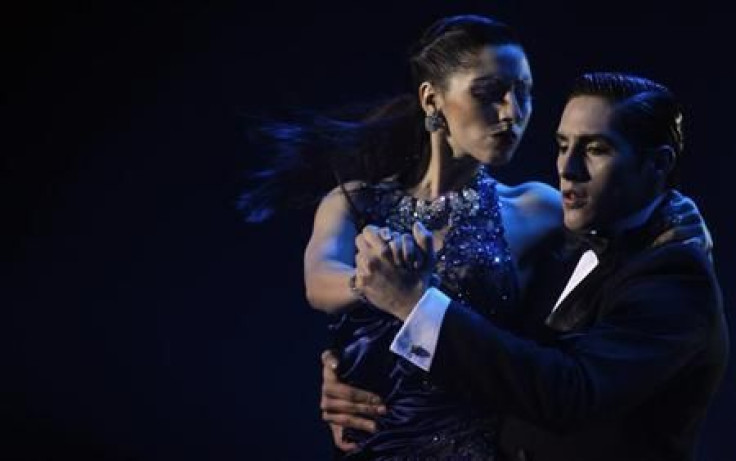Tango Your Mental Illness Away: Psychiatric Hospital In Argentina Offers Patients Dance Classes To Build Social Communication

A psychiatric hospital in Argentina is teaching patients how to deal with social interactions by way of tango classes that build on human connection. Borda Hospital in Buenos Aires features the “All of us are crazy for tango” program where male patients get the opportunity to dance with visiting females in hopes of sparking some type of shared human contact.
"To dance, it's necessary to include the other, which requires coming out of your little world," Psychiatrist Silvana Perl told The Associated Press. "Then comes the hug. The whole world is now fascinated with hugging, which is a form of communication. And 'communication' comes from what we have in common. This is something that we have in common, this hug of the tango."
Borda Hospital, the largest hospital in Buenos Aires, features the tango therapy program every other Wednesday leading up to this week’s celebration of its annual tango festival. Perl and dancing instructor, Laura Segade, teach patients the basics behind Argentina’s national dance. Aside from establishing a mode of “communication” between tango partners, these bimonthly sessions also give patients the chance to unwind and have a little fun, which is essential to anyone’s mental health.
"With tango, you have the advantage of having many different styles of dancing to fit each specific patient," chairman of the Wales-based International Association of Tango Therapy, Martin Sotelano told Reuters. "You focus on the embrace and the communication for couples counseling; the eight basic steps of tango for Alzheimer's; and the tango walk, that requires so much grace and rigidity, can help a patient with Parkinson's."
Although Borda Hospital primarily uses tango to get their mentally ill patients familiar with social situations, a range of other mental and physical health complications are treated via tango therapy. For example, researchers from Washington University in St. Louis recently finished up a study examining the effects of tango therapy on 19 patients suffering from Parkinson’s disease. Compared to patients who engaged in light exercise sessions, those who participated in tango classes were able to improve on their balance and mobility. As Parkinson’s progresses, nerve cells in the part of the brain that controls muscle movement deteriorate, making limb control difficult.
“We think that tango is feasible for individuals with Parkinson’s disease and may be an appropriate and effective form of group exercise for individuals with Parkinson’s,” said Dr. Gammon Earhart, assistant professor of physical therapy at the university. “Although some participants were initially skeptical because they hadn’t danced in years or thought they couldn’t because of the disease, this study shows that dance can improve functional mobility.”



























